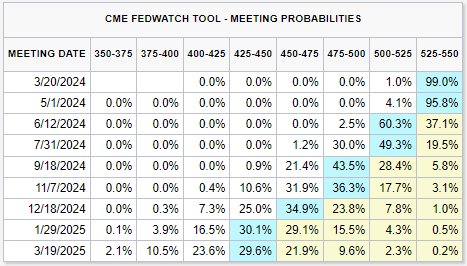US Treasury Yields surge on hot PPI and mixed Retail Sales

- US Treasury yields jump as inflation report cools expectations for immediate Fed rate cuts.
- February’s Retail Sales rebound highlights consumer spending strength despite falling short of forecasts.
- Producer Price Index (PPI) data and lower-than-expected jobless claims reinforce views of strong economic activity.
US Treasury yields made a significant leap on Thursday, a direct response to a hot inflation report in the United States. This development is expected to deter the Federal Reserve from cutting rates in the March and May meetings, as traders have also reduced their bets for a rate cut in the June meeting.
Market adjust rate cut expectations amid strong US economic data
On Thursday, the US Commerce Department unveiled a positive trend in Retail Sales. Despite a -1.1% contraction in January, sales rebounded in February, expanding by 0.6% MoM. While this figure fell short of the estimated 0.8%, it underscores the resilience of US consumers, who continue to be the mainstay of the robust US economy.
Other data revealed by the US Bureau of Labor Statistics (BLS) showed that inflation remains high. The Producer Price Index (PPI) exceeded forecasts of 1.1% and climbed 1.6% YoY in February, while the core PPI expanded by 2% YoY, unchanged, though a tick higher than the estimated 1.9%.
At the same time, Initial Jobless Claims for the week ending March 9 rose by 209K, missed estimates of 218K, and stood below the previous week’s reading of 218K.
Given the fact that Fed policymakers stressed during the last week that they would remain patient on cutting interest rates bets, after the data, traders pared bets that the Fed would slash rates in the June meeting from 72% at the beginning of the week to 62%.
The US 10-year Treasury bond yield has risen nine and a half basis points (bps) to 4.288%, while 2s edged up five bps to 4.689%, reducing the curve’s inversion to 40 bps.
Interest Rates probabilities
What to watch?
In the meantime, traders brace for further US economic data on Friday. The calendar would feature Industrial Production, the New York Fed Empire State Index, and the University of Michigan Consumer Sentiment.
